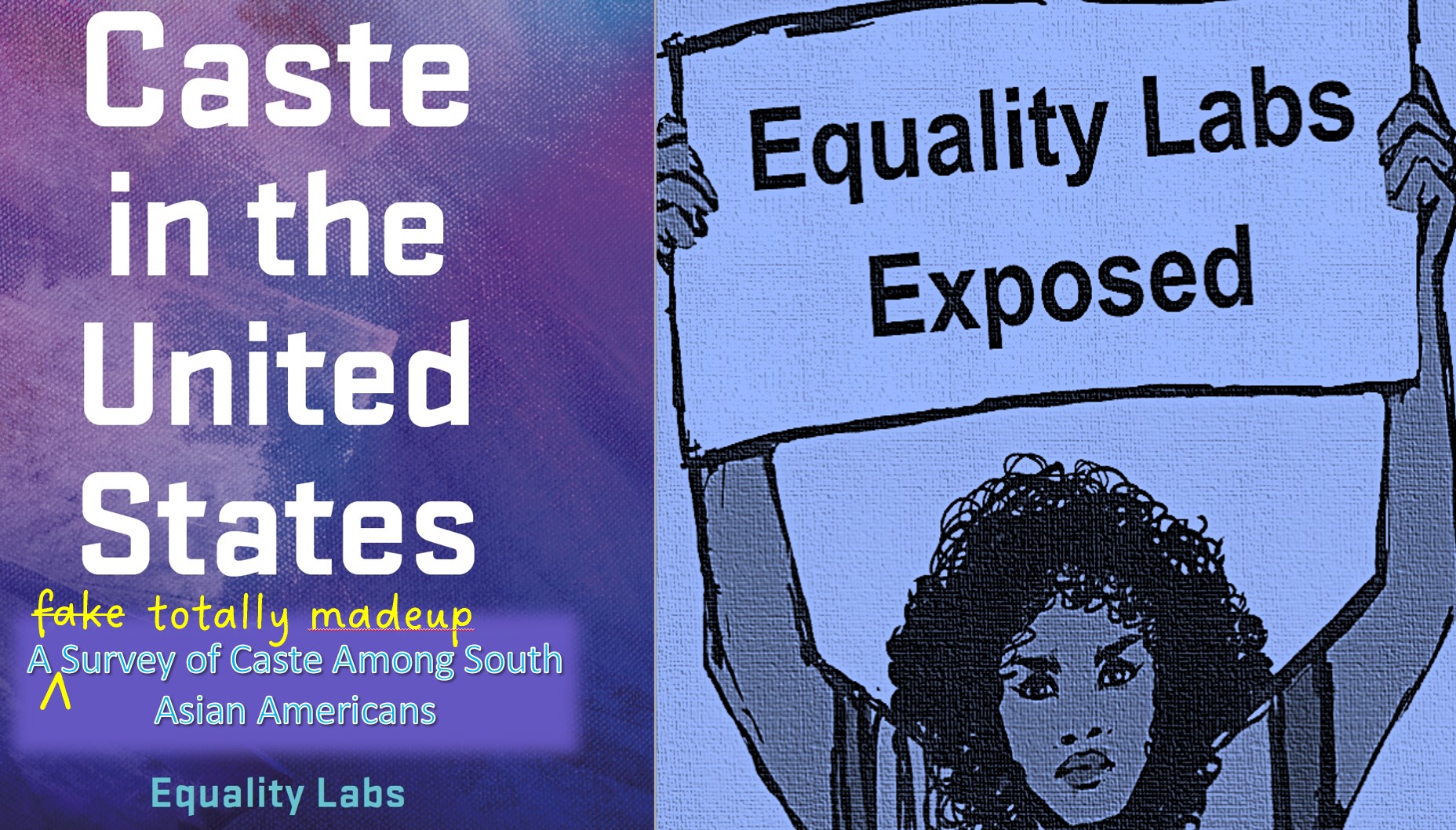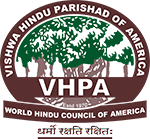- Hindus started to take steps towards protecting their faith as soon as it became clear that the British intended to convert the Hindu masses to Christianity.
- A number of new sects were formed that addressed the discrimination and abuses that had crept into Hindu society under Muslim rule.
- Swami Dayanand’s Arya Samaj and Swami Vivekananda’s Ramakrishna Mission based on Advaita Vedanta were and still are the most influential.
- Colonial falsehoods such as the Aryan invasion and Dravidianism led to divisive and violent movements in the West and South, which still survive.
- Unfortunately, independent India under Nehru chose to institutionalize the caste hierarchy for reverse discrimination, where it remains.
The Hindu religion and social organization were impacted by Muslim and Christian invaders and settlers. The former dislocated and impoverished the Hindus, and the latter described them as a pagan race hobbled by rigid social compartments. Caste was a slogan and a sound bite that conjured up a race of little brown monsters. This article is about the impact the theory of caste has had on Indian society.
Even today, school textbooks in America present caste as a 3,000-year-old, unchanged, rigid stratification of Hindu society. Hindus have no input into the textbooks, and most academics, media, and politicians believe the lies they contain. The result is a populace brainwashed about caste and other political-legal consequences.
We explain first how Hindu society became fragmented, medieval, ill-educated, poor, and superstitious. Next, with reference to previous articles in this series, we describe the three main kinds of Hindu opposition: (a) Back to the Vedas, (b) Original Varnashrama, and (c) Colonial Theorists, of which only (c) received state support.
A companion article, next in the series, will discuss caste in India after independence. Nehru and Ambedkar chose to retain thousands of British castes and legislated reverse birth and caste-based preferences for the disadvantaged. Although initially termed temporary, the catalog and the preferences have continued to expand due to political opportunism. Caste labels are now central to election campaigns and government preferences and quotas.
The “Caste System”: A Recap
As early as 40,000 years ago, based on C14 dating, Indians were drawing lifelike animals in Bhimbetka caves.[1] Indian society has changed continually since then, uniquely without any wars of religion. Hindu governance and policies from the 2nd century BCE followed the world’s earliest manual of statecraft, Kautilya’s Arthashastra.[2] Xuenzang,[3] circa 629 CE, describes a nearly ideal society that valued learning, ruled by a compassionate king, and organized into four occupational classes.
India’s fabled wealth attracted invaders from Darius II to Alexander and led to economic and political relations. Although Indians repelled the Huns and even Ghengiz Khan, the uncivilized genocidal violence of Arab-Turkish invaders, starting with the early 8th-century invasion of Sindh by teenage sadist Mohammad bin Qasim [4], overwhelmed them. As explained in Secret 4, the result over time was a large population of displaced native Indians, comprising primarily Hindus.
As Muslims settled in to rule, they monopolized towns and trades, condemning Hindus to highly taxed agriculture, famines, and poverty. The prevalence of slavery, abuse, and lechery led Hindus to social isolation (e.g., dining, socializing, marriage) and female shielding (e.g., head-to-toe coverings and female-only living areas). These features are traced to Islam because they are not seen in regions that escaped Muslim rule.
The isolation plus economic hardship felt almost exclusively by Hindus sharpened divisions between jatis and created a dog-eat-dog mentality with sharp jostling for Muslim favors. Arguably, this is how rigidity and superstitions spread among Hindus. The fluid Hindu social order that had lasted millennia began to fray.
For example, Barbosa[5, 1519] describes Muslim-ruled cities, with a few Brahmins, Rajputs, and Banias, but Tavernier[6, 1680] mentions 72 Hindu divisions (“castes” in 19th century English), uneducated and superstitious, divided by occupation, dining, and marriage. Evidently, Muslim rule increased the fragmentation of Hindu society.
While this was going on, Vasco da Gama’s so-called “discovery of India” was followed by a series of wars involving Muslim rulers and European powers. By 1818, the East India Company laid claim to all of India, aided by hundreds of native satraps who pledged allegiance to the emerging power. The failed 1857 War of Independence led to the British Crown’s direct rule in 1858.
Through a series of maneuvers detailed in Secrets 3 and 4, the British combined religion and scientific racism to invent an ancient, inescapable, cruel, religiously mandated hierarchy called the caste system. Envisioned as a bigger version of castas, the involuntary state-enforced system of segregation in New Spain took shape in Herbert Risley’s 1901 census, which force-fit Hindu jatis and varnas into “castes.”
Envisioned as a bigger version of castas, the involuntary state-enforced system of segregation in New Spain took shape in Herbert Risley’s 1901 census, which force-fit Hindu jatis and varnas into “castes.”
Meanwhile, the British had decided that enslaving minds was more effective than enslaving bodies. The English Education Act of 1835, following Thomas Babington Macaulay’s racist advice, ended support for Indian schools and began teaching Indians with foreign textbooks taught in the English language. Tens of thousands of Hindu pathshalas (schools) closed due to lack of funding, but 24,000 Muslim madrasas continue to this day.
The impact on Hindus’ self-perception was swift. For example, Nath[7] [1899] acknowledges the greatness of ancient Hinduism but laments the modern one with thousands of “castes,” abominations such as untouchability, belief in superstitions and astrology, and senseless rules like the prohibition of ocean travel. These issues were undoubtedly real and present but did not represent the norm. Indeed, just six years earlier, Swami Vivekananda had held Americans in thrall of Hinduism.
A related British invention, the idea of absolute Brahmin power, still poisons the vast majority of Western minds. Most Hindus follow the path of Bhakti or personal devotion to favorite forms of God. The bhakti marg, dated to the 6th century CE, spread throughout India. It allows Hindus to bring God home, so to speak, with only occasional and advisory interaction with priests and gurus. These realities are stoutly resisted by Western theoreticians in their make-believe world.
Hindus Strike Back
Like Indian uprisings against most things British, the Hindu counterattack on the caste monster was an unintended consequence of colonial rule. Kenneth Jones[8] provides a good account of so-called “reform” movements during the Raj.
The colonial narrative aimed to paint Hinduism in such ugly colors that Christianity would seem superior by comparison. They began to present as the norm isolated cases of violence against women, shudras, and avarnas – practices that had no basis in Shrutis. British courts began to use the newly translated Manusmriti as Hindu law. However, it is full of interpolations and cannot be considered a religious edict. In fact, it is meant to be used according to time, place, circumstances, and wise persons’ opinions.
The colonial narrative aimed to paint Hinduism in such ugly colors that Christianity would seem superior by comparison. They began to present as the norm isolated cases of violence against women, shudras, and avarnas – practices that had no basis in Shrutis.
The imperial design was clear from the end of pathshalas (Hindu schools) and government support for the printing of Hindu literature. Instead, military and church schools taught only the alleged evils of Hindu society. Macaulay’s school system taught an imposed English curriculum with no moral or spiritual content, and the press presented isolated cases of aberrations in Hindu society as the norm.
Farsighted Indians realized that the British aimed to destroy their society. The defense they developed can be grouped into three strategies. One group decided to protect Hinduism by returning to Shrutis. We will call this approach Back to the Vedas. Another group believed in Varnashrama and the formless God of Vedanta; we call this New Varnashram. A third group believed the British theories of Indian society, which led, as expected, to attacks on Brahmins. We will call them the Colonial Theorists.
Route 1: Back to Vedas
The Vedas did not have any caste, misogyny, or any extensive hierarchy. If you were against caste, the past would, therefore, be a logical place to look.
The Brahmo Samaj
It was 1813 when Parliament authorized missionaries to proselytize in India. Just 15 years later, educated (Kulin, Bhadralok) Brahmins in Bengal launched a British-style cultural-spiritual club called the Brahmo Sabha and, later, Brahmo Samaj.
The founder of Brahma Sabha, Raja Ram Mohun Roy, was well-read in both Vedic and Christian traditions. He was against the Pauranic religion with its legends, idolatry, and superstitions, and also against the contradictory and irrational elements of Christianity. Hindus thought that he was excessively pro-Christian, and Christians denounced him for not accepting Jesus. Today, Roy is cited with admiration in the West but considered a deserter by Hindus. Still, to his credit, he used Western techniques of printing and organization to fight Western intrusion into Indian culture.
Roy’s successor was Debendranath Tagore, a scion of wealthy landowners who chose the name Brahmo Samaj, wrote its creed and a volume of hymns, and modernized Hindu sanskaras (life-cycle rituals). Under him, the Samaj expanded throughout Bengal and attracted young idealists such as Keshub Chandra Sen, who broke off from Tagore to create the Adi Brahma Samaj but stayed close to his roots.
Sen was a dynamic leader who focused on social reform. He managed to pass the Brahmo Marriage Act, which legalized intercaste and widow marriage by declaring Brahmoism a separate religion. By 1872, he had 101 branches in Bengal and Bengali communities elsewhere. Proposing an idolatrous marriage of his 14-year-old daughter eroded his leadership. He experimented with Chaitanya’s devotional dancing but finally found a new alliance of religions, including a Christian ritual.
The Brahmos were elite English-speaking Brahmins who tried to escape the ritualistic and non-spiritual Hinduism common in their day. They rejected Varnashrama dharma and reverted to the intellectual dharma of the Vedangas. Most of all, they made it acceptable for modern English-educated Hindus to be proud of their heritage, which undoubtedly obstructed the colonial Christianization project. Their ideas inspired other thinkers, from Swami Dayanand to the Dalit Guru Ravidas.
The Arya Samaj
Although ultimately ill-fated as an organization, Swami Dayananda’s Arya Samaj had perhaps the greatest impact on modern Hindu society, especially through the Dayanand Anglo-Vedic or Anglo-Vernacular (DAV) schools and colleges. Note that Arya means noble; it has nothing to do with the Aryan Invasion theory.
Swami Dayanand was born in a Gujarati Brahmin family and studied to follow the family occupation of a priest. However, he ran away from his planned wedding at age 11. He spent the next 25 years as a wandering ascetic and promised his Guru Virjanand to restore the rightful place of the Vedas. In 1872, meeting Debendranath Tagore, he decided to preach his ideas to general audiences in Hindi. In 1876, he became the first Indian to call for Swaraj, i.e., complete independence from the British.
A return to Vedic roots was a de facto revolution. To start with, every human being of any gender or occupation was equal in the eyes of God. Second, the entire world of the Puranas, including deities, legends, idol worship, temples, priests, pilgrimages, animal sacrifices, astrology, and so on, was bypassed. Third, women had equal rights, including widow remarriage and a ban on sati, child marriage, dowry, and flashy weddings. In brief, he anticipated in the 1870s most tenets of modern feminism, based on the Vedas, without attacking motherhood or the family. His 1875 treatise Satyarth Prakash[9] has been translated into 16 Indian and eight foreign languages.
The Bombay Arya Samaj was founded in 1875, and the Lahore Arya Samaj in 1877. Many local branches of Arya Samaj cropped up in Northwestern India, but there was no central organization. Upon his death in 1883, each Samaj paid its own respects. In his memory, the first DAV college, accredited by Punjab University, opened in Lahore in 1889 with 550 students. As the DAV system and provincial Arya Samaj bodies grew, the traditional wing that considered Dayanand a rishi and his word infallible split off from a “moderate” wing in 1893. The latter was financially weaker.
The moderate wing recovered from financial difficulties to expand the DAV system and assist in orphan and famine relief. The “militant” wing opened a Kanya Mahavidyalaya and introduced proselytization (Ved prachar) and conversion (shuddhi), which had the unintended effect of firing up orthodox Muslims. Some of them assassinated Pandit Lekh Ram in 1897 and Pandit Shraddhanand, who focused on the shuddhi movement, in 1926. Both incidents accentuated Hindu-Muslim tensions in the Punjab.
The Arya Samaj gave Hindus a complete structure of prayer, worship, belief, and social norms that came undeniably from ancient India. While its belief in the one true Vedic religion did not survive Hindu pluralism, it made educated Indians aware of the glory and the superiority of original Vedic thought. The Hindu-led Indian renaissance of the 21st century can be traced to the Dayanand revolution.
Route 2: New Varnashram
Other leading thinkers were not prepared to abandon Varnashram dharma but wanted to modernize it and eliminate medieval abuses that imitated Islam.
The Ramakrishna Mission
English-educated law student Narendranath Datta, son of a successful lawyer, met Swami Ramakrishna in 1882. The swami had experienced many religions and believed in equal validity of all religions, including Hinduism. When he passed away in 1886, a year after Narendranath joined him, the latter held the flock together. But he could not divert them towards social causes that he believed in.
An independent thinker armed with mastery of Hindu texts, Narendranath preached his message of a socially conscious Hinduism and sought support from Hindu kings. That’s how he arrived, named Swami Vivekananda, at the 1893 World Parliament of Religions in Chicago. Over the next four years, he became the very first global Hindu celebrity. With money from his foreign tour and observations of the Christian religion, he founded the Ramakrishna Mission and dedicated it to a new gospel of Karm Yog. He visualized a group of selfless volunteers who would achieve moksha through social service.
During his short life of 39 years, Vivekananda created a global Hindu mission focused on service and guided by an amazing library of teachings and observations. Young English-speaking Indians were drawn to his fame in the West and his social service agenda. He considered Vedanta the supreme universal philosophy, gifted to the world by glorious ancient India. But he also respected the West for its work ethic, material prosperity, and individual freedom, including for women. His vision of the world was a synthesis of Hindu spirituality (Vedanta) and European materialism.
Swami Vivekananda was a unique Hindu who, metaphorically, leaped like Hanuman to Western Lanka and won them over. Back home, on caste, in particular, his thinking was nuanced. He approved the Vedic varnas based on one’s qualities and actions but not the birth-based divisions based on jatis. By demolishing the latter, Hindus could return to past glory. The present popularity of Vedanta philosophy is largely due to his lead.
In addition, Vivekananda was a nationalist and a progress-minded karma yogi, unlike renunciants of the past. His emphasis on social service (seva) and engaged Hinduism inspired later organizations like the RSS. His interest in economic progress influenced, for example, Jamsetji Tata’s plan to start a steel mill. His writings inspired national leaders like Gandhi and Tagore to take pride in and affection for India.
Today, the Mission has 198 centers in India and 67 outside. Their activities include satsang, arati, festivals, and so on. In 1980, the Mission petitioned the Supreme Court to be declared a minority religion since the Indian constitution permits minorities to set up religious schools. The petition was rejected in 1995.
It is only due to India’s colonial-era legal thinking, laws, and constitution that India’s greatest spiritual philosophy cannot be taught in schools.
The Gandhi Effect
The methods considered so far remained upper-middle class phenomena. Mahatma Gandhi was about to stir up the pot in a big way, which had a lasting impact.
Several thinkers sought spiritual innovation more in tune with the colonial era. The “gurus” Aurobindo and Rabindranath Tagore come to mind. All rejected practices that invited abuse of power, such as sati, untouchability, and child marriage. But Gandhi stands out for his direct personal attack on untouchability.
For Gandhi, untouchability was “a custom masquerading under the name of religion” and a blot on humanity that could not stand the test of reason. It was not part of the guna-karma-based Varna system; it was an impurity to be eliminated. So, he started doing “unclean” tasks and invited untouchables to live with him. When donors and followers objected, he threatened to move and live with the untouchables.
The resistance of orthodox Hindus to Gandhi’s campaign was fierce because he lived like an untouchable, AND he believed in varnashram dharma. But Gandhi’s nationwide popularity as a “Mahatma” and his command over the Congress-led independent India to outlaw untouchability and many other customs. Unfortunately, Gandhi has lately been vilified by anti-Hindu forces such as Khalistanis and Dalit militants.
Other Sanatani Movements
Many popular movements accepted an incarnate God and the Vaishnava tradition while rejecting caste distinctions. Examples are Bijoy Krishna Goswami, a prominent Brahm Samaji who reverted to the Chaitanya tradition and founded several ashrams, and Shiv Dayal, a mystic from a banker family who founded the Radha Swami Satsang in 1861. After his death, the Satsang split into two groups, one of which has built an impressive marble edifice in Agra that rivals the Taj Mahal.
The Bharat Dharma Mahamandal was a case where hundreds of religious associations came together to transfer power from mahants, akharas, and monastic orders to urban devotees. Founded by Pandit Din Dayalu Sharma and funded by wealthy Hindu princes and merchants, it spawned a dense network of Sanatan Dharm Sabhas in cities [9]. The Mahamandal connected and energized orthodox “universalist” orthodox Hindus, who considered everyone equal. Other sampradayas that rejected caste distinctions include the Satya Mahima Dharma of Odisha and the Satnamis of Chhattisgarh.
The highly successful Akshar Purushottam Swaminarayan movement, founded in 1905, also rejects all forms of discrimination. The now-global organization saw spectacular growth under the direction of Pramukh Swami from 1971 to 2016. Their highly intricate, spectacular temples worldwide have greatly enhanced the image of Hindus. Like any other sampraday, they have their unique philosophy and practices. For example, men and women are separated in their temples and events.
Three ashrams or residential communities that started during the Raj, Auroville by Sri Aurobindo, Santiniketan by Debendranath Tagore, and Sabarmati by Mahatma Gandhi, went further and rejected inequalities between human beings based on gender, class, or nationality. Auroville is a thriving community and tourist center, Shantiniketan is the Vishwa Bharti University, and Sabarmati is a memorial.
A movement that would spawn a Hindu renaissance was the Rashtriya Swayamewak Sangh (“RSS”). It rejects caste but is not explicitly religious. Started in 1925 by Dr. K. B. Hedgewar, it became an idealistic community devoted to the integration and defense of Hindus. Their political offshoot, the Bharatiya Janata Party (BJP), is credited with saving Indian democracy from corruption and nepotism.
There are literally hundreds of sampradayas within the Sanatani fold that consider all human beings equal in the eyes of God. None of them practiced the sort of “caste system” alleged and spread worldwide by the British imperialists. Recognizing the distinctions of varna and jati does not mean discrimination based on caste.
Route 3: Colonial Theorists
These movements take as their basis the colonizing myths of Aryan invasion, Aryan supremacy, subjugation of the South, a slavery-like caste system, proto–Christian Dravidians, and the dictatorship of evil Brahmins. They and their offshoots still enjoy the support and recognition of Western power centers, which already despise everything Hindu. These groups opportunistically align with separatists and destabilizing forces in India and abroad and remain powerful barriers to India’s unity.
Aryan Invasion Theory
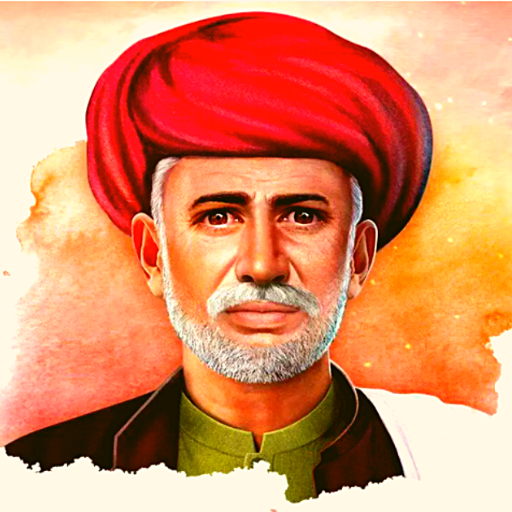
The colonial theory that “Aryans” brought civilization to India led Jyotirao Phule, a successful shudra reformer, to reverse the claim. He said that Brahmins invaded and destroyed native culture and were just as foreign and cruel as Muslims. In support of this, he marshaled the pauranic legend of Raja Bali [10], who was duped. To him, the Vedas were just expressions of Brahmin greed. What he sought was not an end to the caste system. He wanted a “caste system” that was inverted.
Phule’s prescription for non-Brahmins was to denounce the Vedas and later scriptures and negotiate a new Veda. According to him, “Dasyus were the original inhabitants of the land; they were brave, pure at heart, and upright in their conduct.” He did not want high-caste reformers and freedom fighters to represent the real Indians, the so-called “lower” castes. He was called a Mahatma and won many followers.
Marx wanted the proletariat to rule and the bourgeoisie to die. Revolutionaries like Phule wanted the “lower” castes to rule and the Brahmins to die. They did not expect Brahmins to concede, as Marx did not expect the bourgeoisie to. India has been spared a Marxist Dalit revolution so far, but tensions are rising in the South.
Phule founded the Satyashodhak Samaj, a community service organization that raised awareness of discrimination based on caste and gender. Their volunteer program focused on uplifting and supporting Dalits, Shudras, and women (overseen by his wife, Savitribai). The Samaj joined the Congress movement in the 1930s.
Turning the Tables on Brahmins
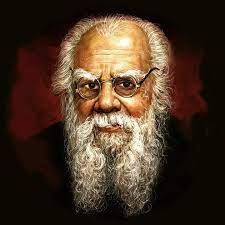
In 1904, E.V Ramaswamy, 25, from a merchant Tamil family, was refused a meal at a Kashi charitable eatery set up to serve only Brahmins.[11] Although the place was simply following the terms of its founder’s donation, “EVR” took it to heart.
He fell for the devious divisive ploy of Bishop Caldwell,[12] according to which a proto-Christian people called Dravidians were India’s original inhabitants. EVR proclaimed that Brahmins invaded India, brutalized Dravidians, and appropriated key Tamil scriptures. He wanted to eliminate Brahmins from Government jobs, which they dominated at the time. Many of his speeches[13] were full of unbridled violent rhetoric, such as a call to “beat and kill” the Brahmins [and] burn their houses.” Modern evidence has discredited Caldwell’s theories, but the damage is done.
A fiery orator, EVR was a respected elder (“Periyar”) to Tamils. Like Gandhi, his word carried great weight, but unlike Gandhi, he rejected Varnashram and Hinduism itself as invaders’ impositions and embraced violence. His party, the DMK, was and still is virulently anti-Brahmin, anti-Northern, and pro-Christian.
The techniques Christians used to divide Tamils into natives and enemies and co-opt their religious and cultural symbols are now being used to create a Dalit-Hindu split. There is a well-funded International Dalit Solidarity Network. Hindus have been projected worldwide as the natural enemies of Dalits for millennia.
Posthumous Paternity
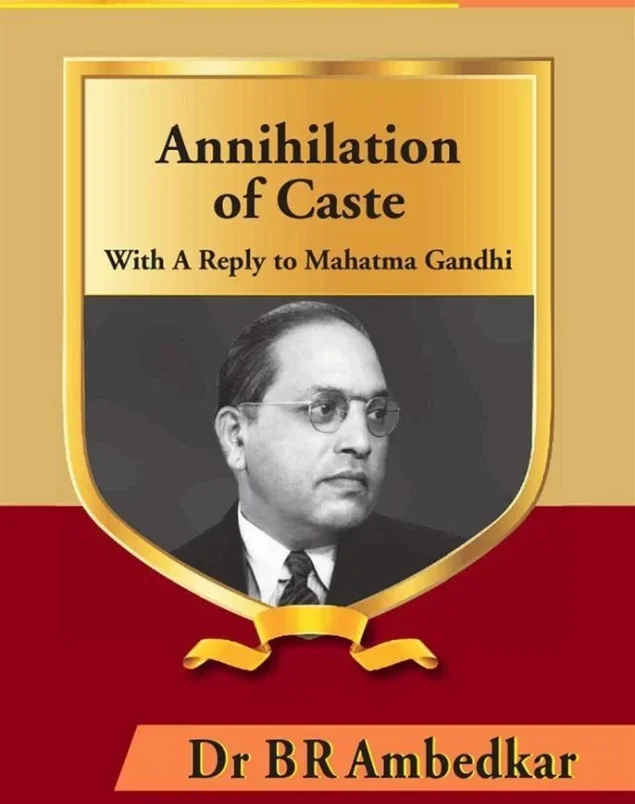
At Gandhi’s invitation, Dr. Bhimrao Ambedkar joined the Constituent Assembly of India. He chaired the drafting committee, which wrote up changes to the 1935 version and authored the new section on Directive Principles. In recognition, he became widely but inaccurately known as the Father of the Constitution of India.
Despite his birth in the Dalit Mahar caste, Ambedkar got a good education at military schools and later at Columbia University, thanks to princely support. Well-read, articulate, and a brilliant thinker, he tried hard to be considered the Dalits’ leader. However, the job was taken by Gandhi, and Ambedkar was pedantic in manner and Western in attire. We will explain his posthumous deification in a later article.
Dr. Ambedkar was the chief theoretician of the Dalit (scheduled caste) rebellion. His flawed axiom was that Brahmin greed and the oppressed were Hinduism’s terminal illnesses. Either Brahmins had to go, or Hinduism itself had to go. This made him a darling of powerful anti-Hindu interests worldwide. But neither they nor he could explain how a poor and disarmed tiny minority (Brahmins) could amass power.
Late in life, Ambedkar converted to Buddhism since Hinduism, according to him, was beyond redemption. After his death, he became the patron saint of Dalits, formerly known as scheduled caste or untouchable. But, as we will see, he undid a century of progress by retaining and expanding castes and the British caste-based quotas.
Concluding Remarks
With so many social, political, and religious movements that rejected divisions of “jaat-paat,” one might think that independent India would reject caste. But it not only retained but expanded the thousands of British-invented castes on the pretext of reversing caste discrimination. The seed of reverse caste discrimination by the state has grown into an unjust and irrational system that both punishes and devalues merit.
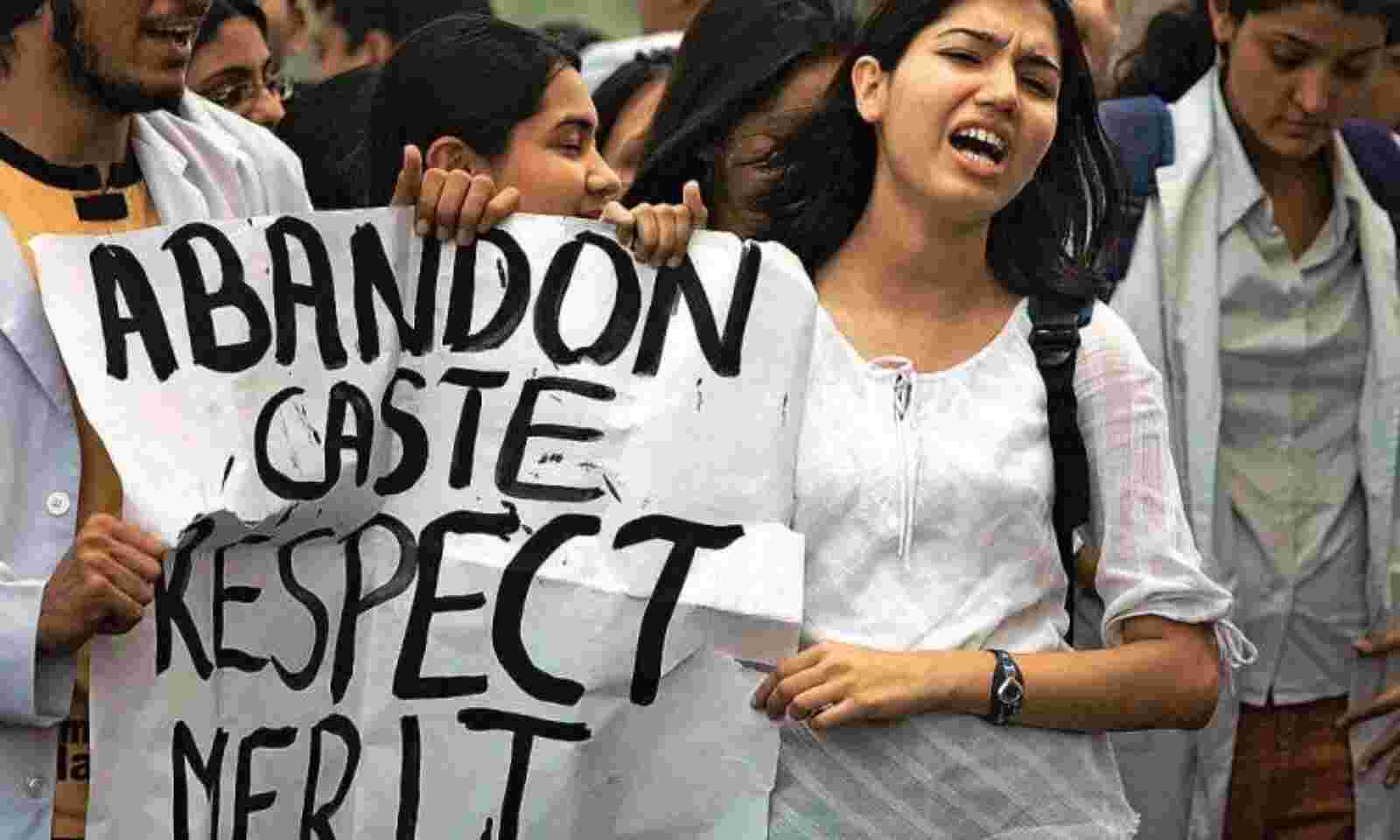
Two individuals were responsible for this reversal of progress towards an egalitarian society: the British-trained Prime Minister Nehru and American-trained caste theorist Ambedkar. Each hated Hinduism for different reasons.
Nehru wasn’t much of an Indian to begin with. The only son of India’s wealthiest and most Westernized attorney, he was brought up by English nannies and educated entirely in England. His indifference to Hindus turned to raging hate when a Hindu assassinated Mahatma Gandhi – and took away Nehru’s adult supervision.
Ambedkar had personally experienced insults based on his Mahar caste, commonly perceived as Shudra. He studied in New York, which was much more egalitarian than Britain. The British theory of caste as an implacable, lifelong straitjacket called caste appealed to him, and he convinced himself that Hinduism was evil [14]
Together, these two leaders produced a constitution and an administrative system that discriminated against the Hindu majority. India is stuck with thousands of fictitious but official caste labels. The result is an enormous wastage of talent and man-hours and a national acceptance of entitlement and unfairness. Worst of all, the country measures progress towards a fairer society in terms of caste.
The next article will focus on how Hindus’ rejection of caste was itself rejected by the Indian state created by Patel but run according to Nehru and Ambedkar.
Jump to: SECRET#1 SECRET#2 SECRET#3 SECRET#4 SECRET#5
Citations
[1] Central Himalayas: An Archaeological, Linguistic, and Cultural Synthesis, by D. P. Agrawal and J. S. Kharakwal, Aryan Books International, 1998
https://archive.org/details/centralhimalayas0000agra
[2] Kautilya’s Arthashastra, by Patrick Olivelle, Oxford University Press, 2005
https://archive.org/details/kinggovernancela0000kaua/page/n5/mode/2up
[3] Xuenzang on India, https://factsanddetails.com/china/cat2/4sub8/entry-5453.html
[4] The Sindh Story, https://sites.google.com/view/sindhstory/truth-about-dahir-sen
[5] The Book of Duarte Barbosa, Vol. 2
https://indianculture.gov.in/rarebooks/book-duarte-barbosa-vol-ii
[6] The Travels of J B Tavernier, Fifth Book, Indian Travels, Volume 3
https://publicdomainreview.org/collection/the-six-voyages-of-john-baptista-tavernier-1678
[7] Hinduism, Ancient and Modern, by Rai Bahadur Baij Nath, published by Vaishya Hitkari newspaper, Meerut, 1899 https://archive.org/details/dli.ernet.237157
[8] Socio-political Reform Movements in British India, by Kenneth W. Jones, Cambridge University Press, 1989. https://ia801304.us.archive.org/18/items/iB_in/3-1.pdf
[9] Satyarth Prakash by Swami Dayanand, link to English editi0n
https://aryasamaj.davchennai.org/wp-content/uploads/2021/05/Satyarth-Prakash-English.pdf
[10] Baliraja and His Legacy, by Nagesh Chaudhary, 2017
https://countercurrents.org/2017/09/baliraja-and-his-legacy/
[11] Periyar EVR Naicker, A Biographical Sketch, page 2
https://www.pmu.edu/centres/pdf/Biographical_Sketch.pdf
[12] “Castes of Mind”, by Nicholas Dirks, Princeton University Press, pp. 134-148
https://redox-college.s3.ap-south-1.amazonaws.com/kmc/2020/Mar/28/jjkdW2d8uHCwZt6a5UhB.pdf
[13] EV Ramaswamy Periyar: The Man Whose World-View Centred Around Hatred (organiser.org)
[14] “Why Go for Conversion?”, speech by Dr. B R Ambedkar, May 30, 1936
https://velivada.com/2017/06/01/why-go-for-conversion-speech-by-dr-b-r-ambedkar/




